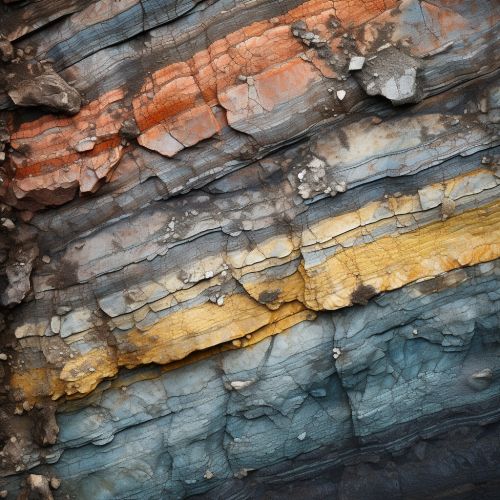Concurrent Range Biozone
Definition and Overview
A Concurrent Range Biozone is a type of biozone used in biostratigraphy, a sub-discipline of geology that uses the distribution of fossils within sedimentary strata to establish relative ages and correlations. A concurrent range biozone is defined by the overlapping or concurrent range of two or more fossil taxa. This type of biozone is particularly useful in the correlation of strata across different geographic regions, and is a fundamental tool in the field of paleontology.


Characteristics
A concurrent range biozone is characterized by the simultaneous presence of two or more specific fossil taxa. These taxa must be identifiable and distinctive, and their range must overlap in the stratigraphic record. The lower boundary of the biozone is defined by the first appearance of the youngest of the defining taxa, while the upper boundary is defined by the last appearance of the oldest of the defining taxa. This type of biozone is unique in that it is defined by the concurrent range of multiple taxa, rather than the range of a single taxon as in other types of biozones.
Application
Concurrent range biozones are widely used in biostratigraphy, particularly in the correlation of strata across different geographic regions. By identifying the same concurrent range biozone in different locations, geologists can establish a relative chronology and correlate the strata. This is particularly useful in the study of paleoenvironments and in the reconstruction of past ecosystems. Concurrent range biozones are also used in the exploration for fossil fuels, as they can help to identify potential reservoirs of oil and gas.
Advantages and Limitations
One of the main advantages of concurrent range biozones is their applicability to a wide range of environments and time periods. Because they are defined by the overlapping range of multiple taxa, they can be identified in a variety of sedimentary environments, from marine to terrestrial, and from the Precambrian to the recent. This makes them a versatile tool in biostratigraphy.
However, concurrent range biozones also have their limitations. They require the presence of multiple distinctive and identifiable taxa, which may not always be available. They also require a good understanding of the stratigraphic range of the defining taxa, which can be difficult to establish in some cases. Furthermore, the boundaries of concurrent range biozones can be somewhat arbitrary, as they are defined by the first and last appearances of the defining taxa, which can vary depending on the quality of the fossil record.
